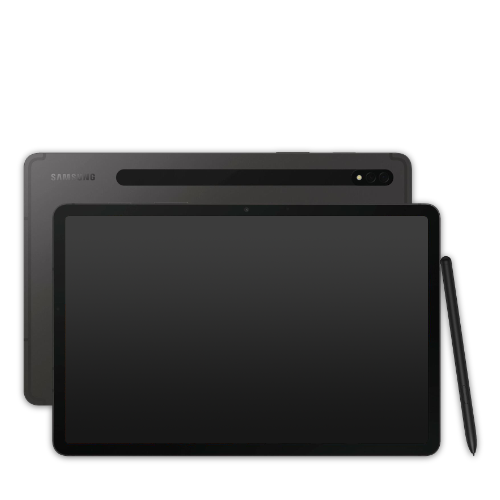On Earth Overshoot Day, all resources for the year are used up
Earth Overshoot Day 2023 will be reached in Germany on May 4th – and thus the point at which we all finite resources that our planet can sustainably provide by the end of the year. The German Federal Environmental Foundation (DBU) pointed out in its recent press releasethat the humanity consumes more resources than our earth can provide and that our ecological footprint continues to grow rapidly. To counteract this alarming development, the DBU is calling for a circular economy in all sectors and a decoupling of economic growth and resource consumption. But what can we do specifically to significantly reduce raw material consumption and delay Earth Overshoot Day?
In this blog post, we will look at the circular economy and product refurbishment as key strategies to combat Earth Overshoot Day. We will explain the basics of circular economy and refurbishment, explore their impact on Earth Overshoot Day, and also provide practical tips for consumers to implement these strategies. Finally, we want to act together to secure a sustainable future for our planet and future generations.
Basics of the Circular Economy
The circular economy is an economic system that aims to keep the value of products, materials and resources in the economic cycle for as long as possible and to reduce waste and pollution to a minimum. In contrast to the linear economy, in which raw materials are mined, processed into products, used and finally disposed of, the circular economy is based on the principles of reduction, reuse and recycling.
In a circular economy, products and materials are designed and manufactured to be easily repaired, upgraded or recycled. This not only promotes the longevity of products, but also reduces the need for new raw materials and energy needed to produce new products. This means fewer natural resources are used and the environmental impact of waste and CO2 emissions is reduced.
An important aspect of the circular economy is the so-called "cradle-to-cradle" philosophy, in which products are designed so that they can be converted into new products or materials at the end of their life. Ideally, this approach does not produce any waste, but rather keeps the materials in a constant cycle.
The circular economy also takes into account the entire value chain - from raw material extraction to production and distribution to consumption and disposal. In this system, companies, governments and consumers work together to implement the principles of the circular economy in all sectors of the economy.
To achieve a successful circular economy, not only technological innovations and new business models must be developed, but also legal frameworks and financial incentives must be created that support the transition from a linear to a circular economy.
Refurbishing as part of the circular economy
Refurbishing is an important part of the circular economy as it extends the life cycle of products and helps to use resources more efficiently. Refurbishing involves checking, cleaning, repairing and, if necessary, upgrading used products so that they are fully functional and of high quality again. This process ensures that the products can continue to be used instead of ending up in landfill and being replaced by new products.
Refurbishing not only reduces the need for new raw materials and energy to produce products, but also the amount of waste that ends up in landfills or incinerators. This reduces the environmental impact of the production and disposal processes. In addition, refurbished products can often be offered at a lower price, making them more attractive to consumers and reducing the demand for new products.
Refurbishing has already gained a foothold in many industries, such as the electronics industry, household appliances or the automotive sector. The increasing acceptance of refurbished products shows that more and more consumers are willing to switch to more sustainable alternatives and thus contribute to the circular economy.
To further promote refurbishing, it is important to drive social change and create greater awareness of the benefits of refurbished products. At the same time, companies and politicians must work together to create the framework for a thriving refurbishing industry and promote the circular economy in all sectors of the economy.
Impact of Circular Economy and Refurbishing on Earth Overshoot Day
The implementation of the circular economy and greater integration of refurbishing practices can have a significant impact on Earth Overshoot Day. By extending the life cycle of products and using resources more efficiently, the circular economy helps reduce the consumption of raw materials and energy. This also reduces the ecological footprint of companies and consumers.
Refurbishing plays a central role in this, as it reduces the need for new products and thus the amount of resources needed to produce them. Less waste and a lower environmental impact from production and disposal are other positive effects of refurbishing. Overall, this leads to a slowdown in resource consumption and a delay in Earth Overshoot Day.
To delay Earth Overshoot Day and reduce the impact of human activities on the environment, it is important that both companies and consumers actively promote and support the circular economy and refurbishing practices. This includes increasing the supply and demand for refurbished products, investing in sustainable technologies and implementing policies that support the circular economy.
The extension of Earth Overshoot Day is a step towards a more sustainable use of our natural resources and a long-term stabilization of the planet. If we work together as a society to implement the circular economy and promote refurbishing practices, we can reduce the ecological footprint and have a positive impact on Earth Overshoot Day.
Practical tips for consumers
As a consumer, you can actively contribute to promoting the circular economy and delaying Earth Overshoot Day. Here are some practical tips to help you make more environmentally conscious choices:
- Buy refurbished products: If you are looking for electronics, furniture or other products, consider buying refurbished products. Refurbished smartphones, laptops or household appliances often perform just as well as new items, but they are more cost-effective and environmentally friendly.
- Repair instead of throwing away: Give broken devices a second chance by having them repaired instead of replacing them. You can use repair services, repair cafes or local craftsmen to extend the life of your products.
- upcycling: Use your creativity to breathe new life into old objects. Upcycling projects can create unique, sustainable products from old furniture, textiles or materials.
- Consume consciously: When shopping, look for environmentally friendly, sustainable and fairly produced products. Find out about the origin of the materials and the production conditions. A conscious purchasing decision can promote the circular economy.
- waste separation and recycling: Separate your waste correctly and use local recycling options to support the recycling cycle. This will help conserve resources and reduce environmental impact.
Conclusion
Earth Overshoot Day clearly shows us that we urgently need to rethink our use of resources and strive for a more sustainable lifestyle. The circular economy offers a promising solution that not only protects the environment but also brings economic benefits. Refurbishing is an important part of this circular economy, helping to extend the lifespan of products and reduce our resource consumption.
As consumers, we have the power to actively contribute to the circular economy by consuming, repairing, upcycling and recycling consciously. This will help us delay Earth Overshoot Day and secure a livable future for future generations. We must work together to embrace the circular economy to protect our planet and create a more sustainable, environmentally friendly world.







